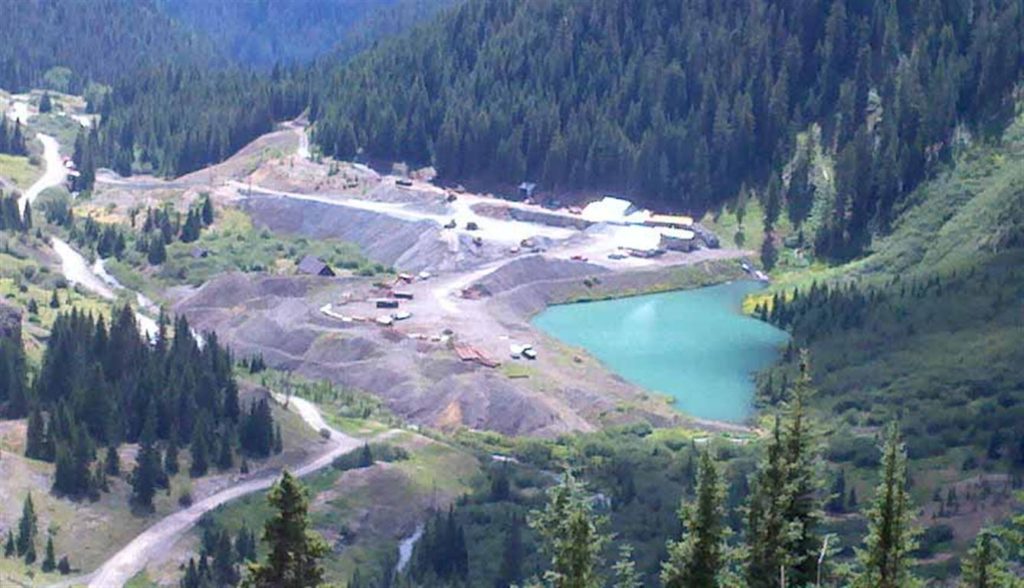| Long-Term Price Case (Ag, Au, Pb, Zn) | $24/oz., $1,700/oz., $1.00/lb., $1.20/lb. |
| Flagship Project | Revenue-Virginius |
| Ownership | 100% |
| Proven & Probable Reserves (AgEq) [FCM Estimate] | 17,165,350 ozs. |
| Shares Outstanding | 152,050,000 |
| Market Cap | $27,369,000 |
| Average Annual Production | 2,673,731 AgEq ozs. |
| Recovery (Ag, Au, Pb, Zn) | 95%, 69%, 95%, 94% |
| Mill Feed Head Grade (Ag) | 24.70 oz/st (771.875 g/t) |
| Mill Feed Head Grade (Au) | 0.06 oz/st (1.875 g/t)) |
| Mill Feed Head Grade (Pb) | 4.97% |
| Mill Feed Head Grade (Zn) | 2.15% |
| Payable Silver | 12,865,000 ozs. |
| Payable Gold | 19,600 ozs. |
| Payable Lead | 51,256,000 lbs. |
| Payable Zinc | 15,527,000 lbs. |
| LoM | 6.42 Years |
| True All-in Costs (TAIC) | $14.43/oz. |
| Gross Revenue | $411,968,400 |
| Smelting & Refining | ($24,520,000) |
| Freight & Insurance | ($12,986,000) |
| Royalties | ($7,333,038) |
| Net Smelter Return | $367,129,362 |
| Total Operating Costs | ($144,387,000) |
| Operating Profit (EBITDA) | $222,742,362 |
| Income Taxes | ($16,015,176) |
| Total Capital Costs | ($42,618,000) |
| Net Income | $164,109,186 |
| Net Profit Margin | 40% |
| Absolute Cost Structure (ACS) | 60% |
| MTQ Score (Higher is Better) | 0.7 |
| True Value | $1.08/sh. |
| True Value Discount (TVD) | 83% |
| Cash Flow Multiple | 10x |
| Average Net Annual Cash Flow | $25,587,612 |
| Future Market Cap | $255,876,120 |
| Future Market Cap Growth | 835% |
| Target | $1.68/sh. |
There’s massive re-rating potential for Aurcana, which is the 100% owner of the fully-permitted Revenue-Virginius Mine, which also happens to be one of the world’s highest-grade primary silver mines at 24.70 oz/st (772 g/t).
Its estimated Net Profit Margin of 40% at $24/oz. Ag is wonderful and its Absolute Cost Structure is a mere 60%. Due to world-class Project Economics, Aurcana has been awarded a rare 10x cash flow multiple and potential returns of 800% if the mine enters production at or near our long-term price case.

The Virginius Ore Deposit
by Berton Woodward Coxe
The Virginius ore deposit, Ouray and San Miguel Counties, Colorado, yielded 14.5 million oz of silver between 1880 and 1912. The deposit consists of several quartz, base-metal, and silver mineralized fissures which is hosted by Tertiary volcanic rocks of the San Juan volcanic field and was deposited in fractures radial to the northwest margin of the Silverton caldera.
Four stages of mineralization have been recognized: (I) quartz, galena, sphalerite, chalcopyrite, and argentiferous tetrahedrite; this stage comprises a bulk of the total vein material and all of the silver; (II) rhodonite, rhodochrosite, quartz, magnetit, galena, chalcopyrite, and pyrite; this stage is observed only in the lower levels of the mine; (III) quartz, calcite and pyrite which replace stage I minerals; (III-A) barren quartz deposited locally crosscutting state II mineralization.
Vein-related wall rock alteration is confined to a 2.0 to 3.0 m envelope surrounding the vein and consists of sericitization, slicification, and pyritization. Tetrahedrite is the primary silver-bearing phase and averages 15.5% silver. Silver is negatively correlated to arsenic in tetrahedrite. Galena is conspicuously non-argentiferous. Homegenization temperatures of fluid inclusions average 218 degrees Celsius for stage I mineralization and 101 degrees Celsius for state III mineralization. No evidence for boiling was recognized in the samples studied. Salinities of the ore-forming fluids were mostly between 2.0 and 3.0 % NaCl equivalent. Oxygen isotope data indicate that the Virginius ore-forming fluids underwent extensive isotopic exchange with the country rock. The most notable aspects of the Virginius ore deposit include the overall high grade of silver (40+oz/ton), the general lack of mineralogical or metallogenic zoning, the extreme vertical range of the ore shoot (700 m), the lack of evidence for boiling of the ore-forming fluids, and the total amount of silver produced from such a narrow structure.
Citation
Coxe, Berton Woodward. “The Virginius Vein Ore Deposit, Northwestern San Juan Mountains, Colorado: A Study of the Mineralogy, Structure, and Fluid Inclusions of an Epithermal Base-Metal and Silver Vein in a Volcanic Environment.” (1985). https://digitalrepository.unm.edu/eps_etds/180
